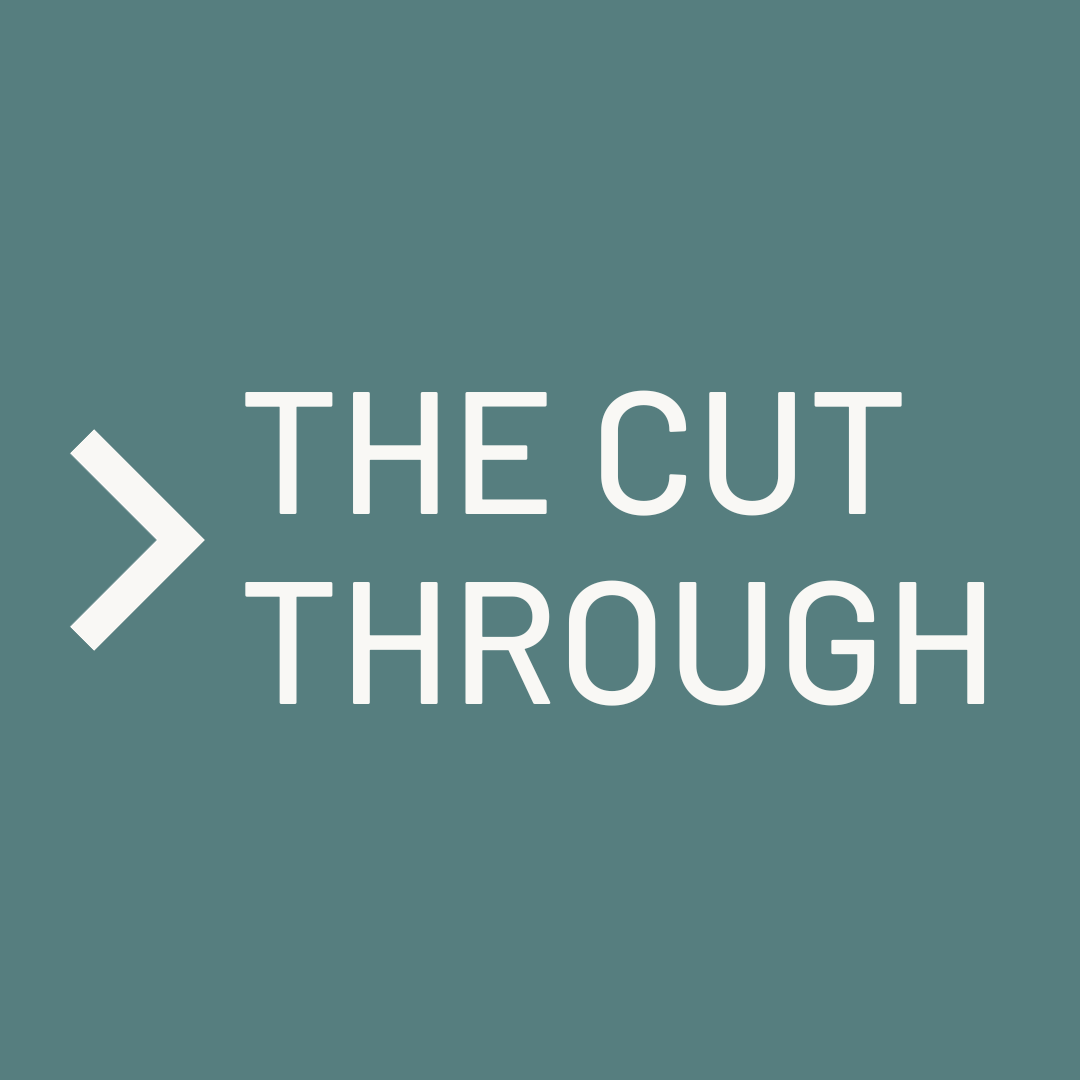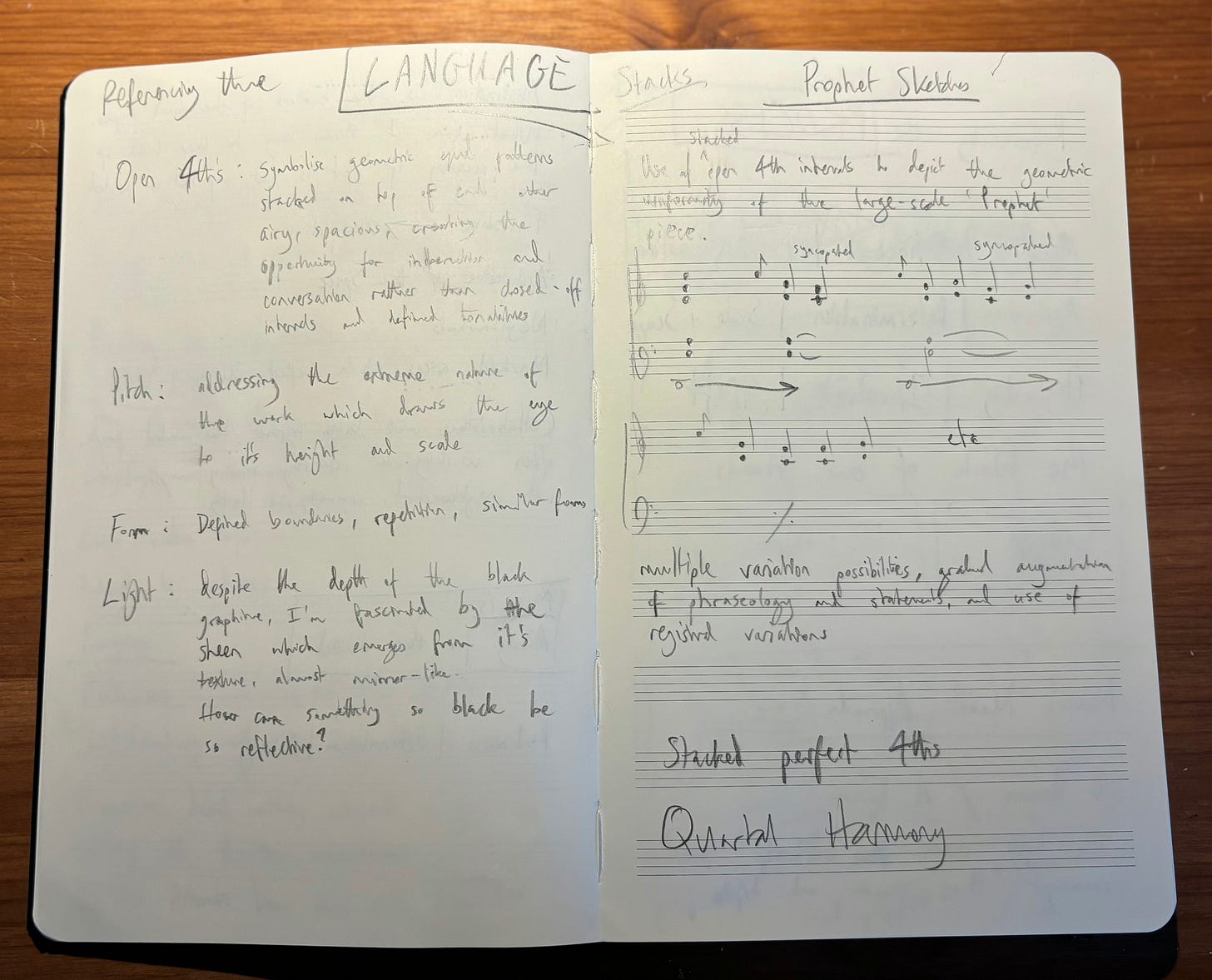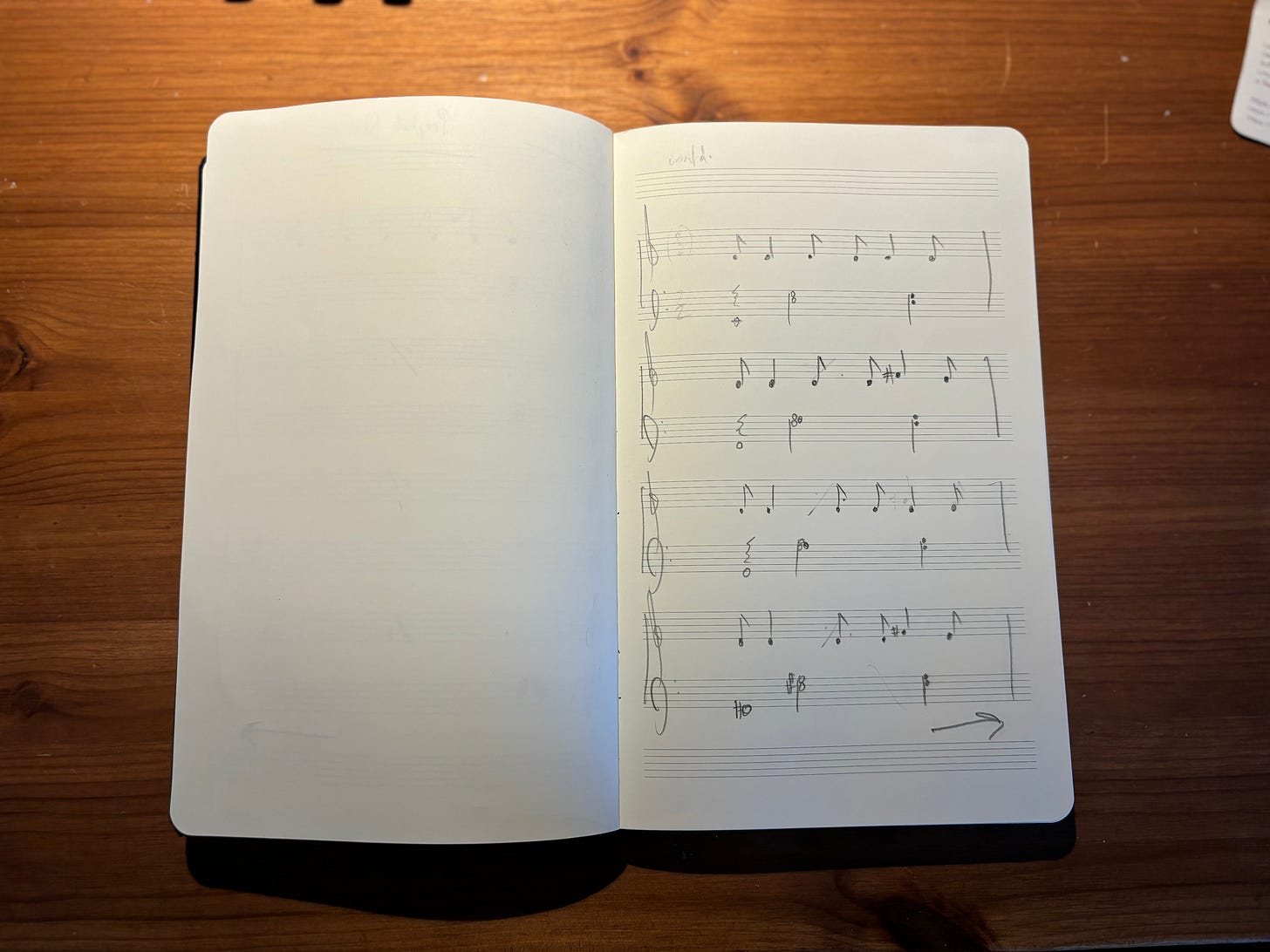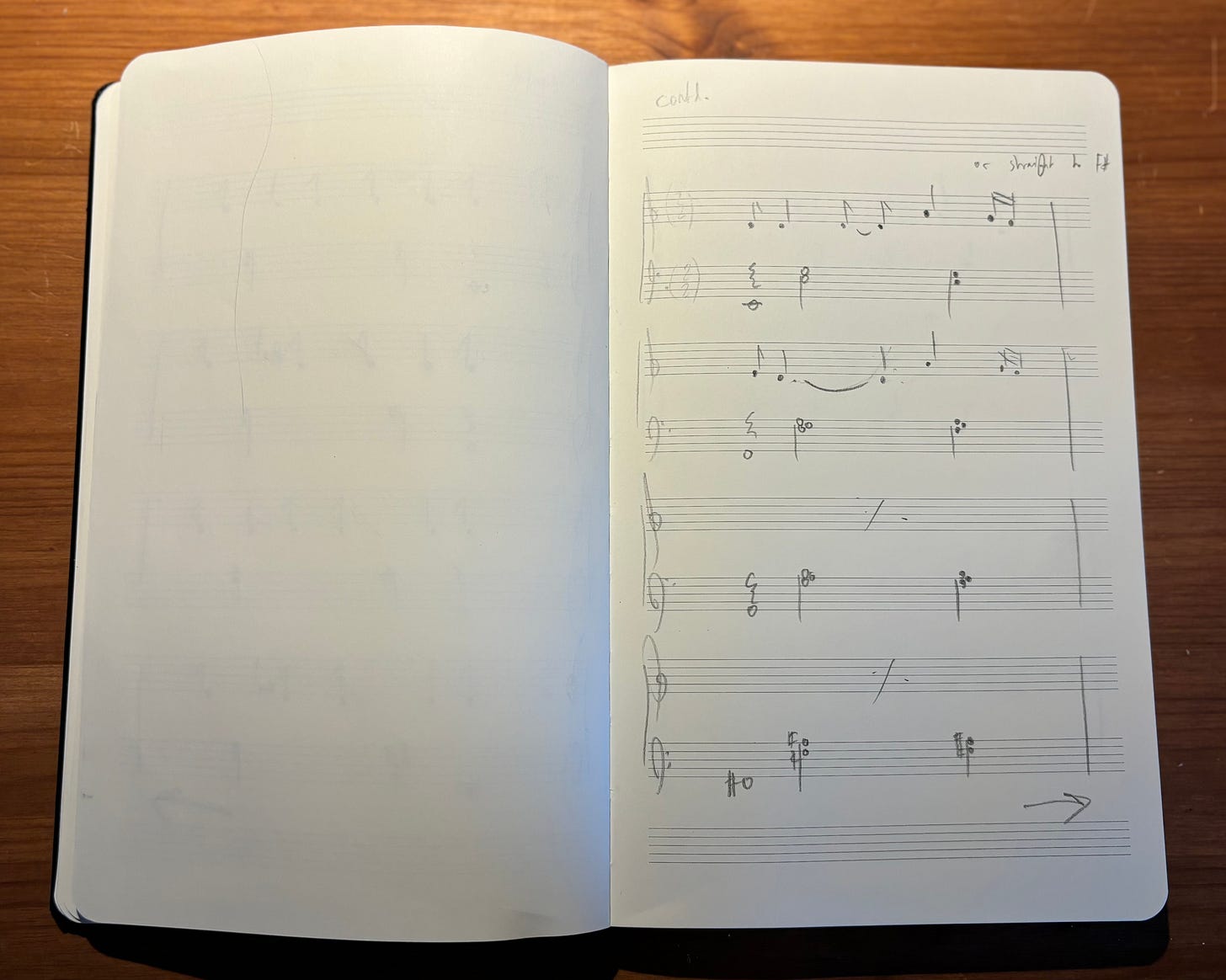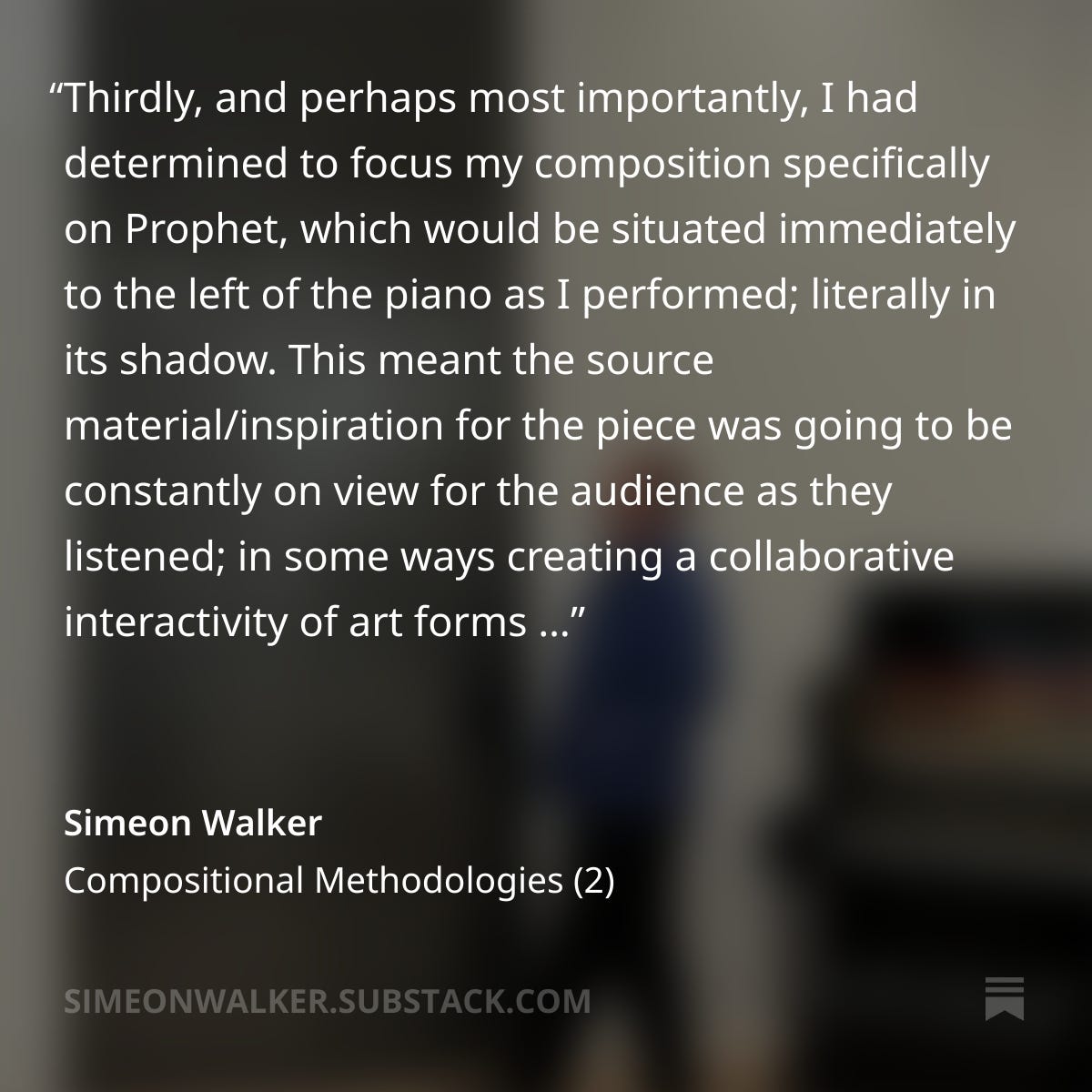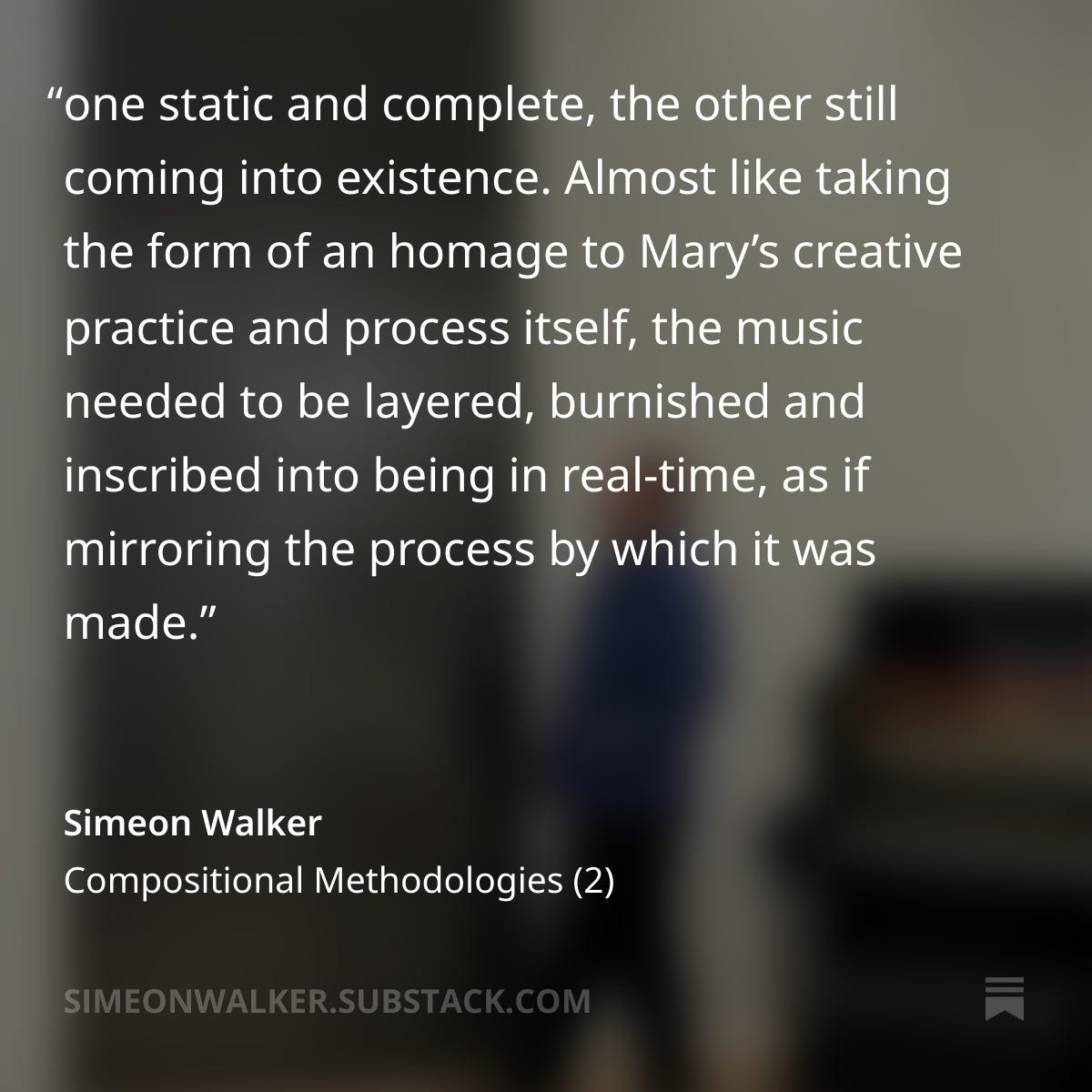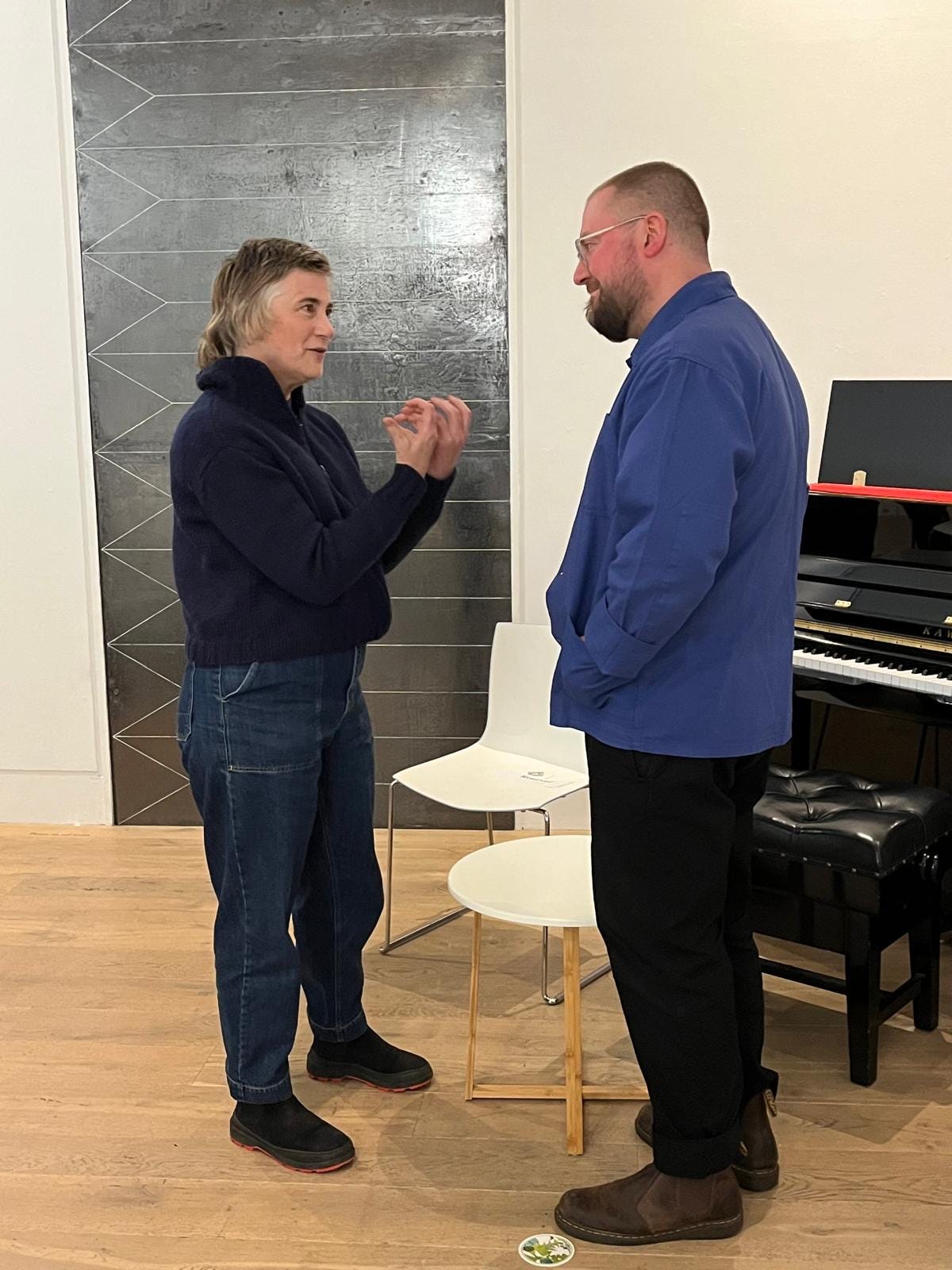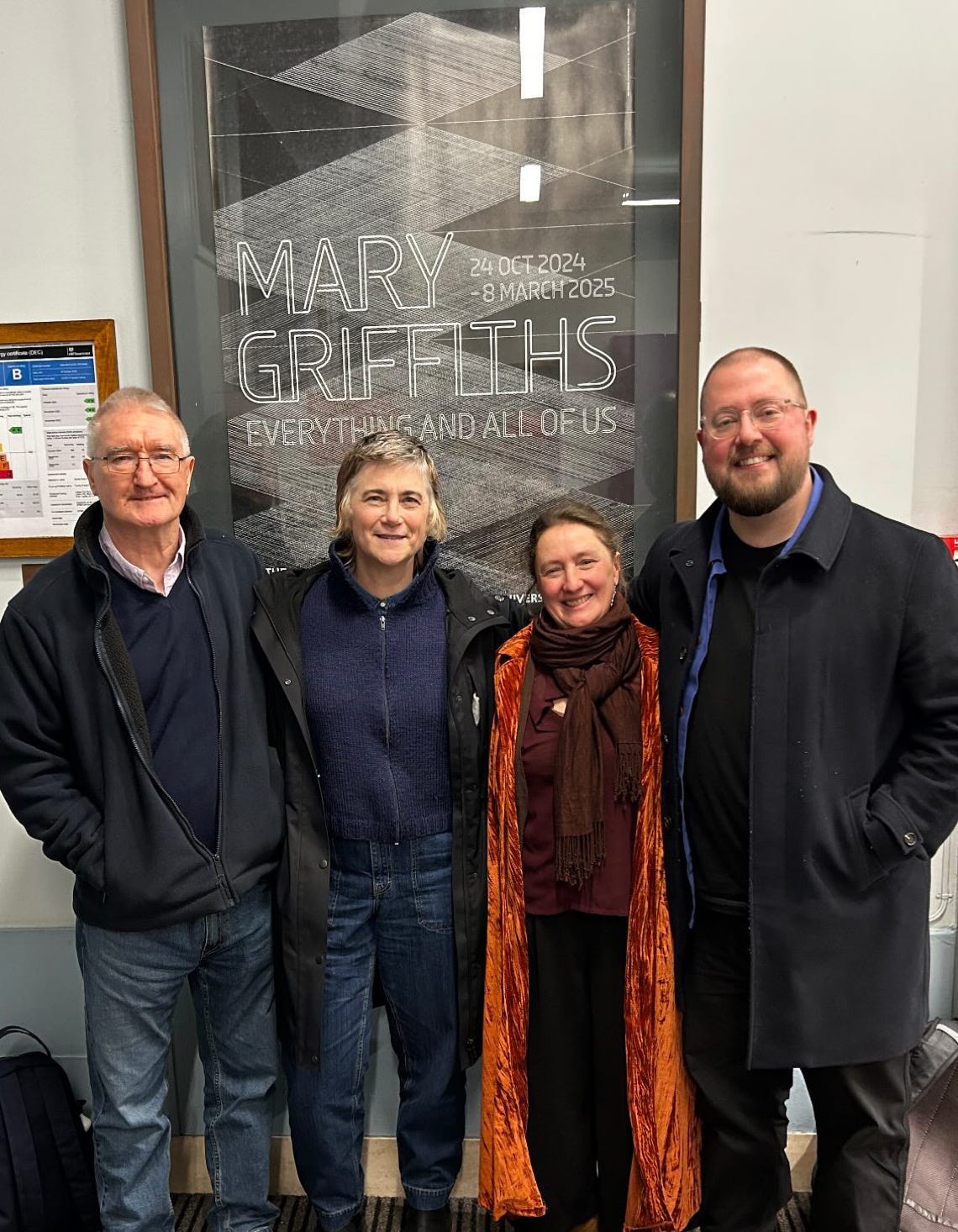Compositional Methodologies (3)
Approaching a commission: performing, celebrating and learning how to let it lie
This is the third and final post in a short series of articles focusing on sharing a range of my compositional methodologies and approaches, seen through the lens of a recent commission for the University of Leeds. Thank you for your interest - please do let me know your thoughts in the comments below.
Following on from my previous two posts in this short series in which I have been sharing some detailed thoughts around musical composition through the lens of a recent commission, today I am thrilled to share the actual music and work with you!
If you missed either of the previous posts, or would like a recap, here are some quick links for you:
(FYI: the best way of reading and engaging with this specific post will be within the excellent Substack app, rather than your email. The in-app UX will enable you to listen to the recording whilst also being able to read this and the previous posts, or look over and follow the sketches I shared last week)
Performing
So, my friends: here for your listening pleasure this weekend is my piece Prophet - a commissioned response (2025) by the Stanley & Audrey Burton Gallery at University of Leeds to Mary Griffiths’ wall-drawing of the same name, and a central feature of her recent Everything And All Of Us exhibition at University of Leeds’ Stanley & Audrey Burton Gallery.
Feel free to listen to the above recording whilst exploring other aspects of this project and series. However, if you’d prefer to watch the performance as it is and with no distractions, there is a video of the performance at the end of this post. Scroll down to the bottom to find it.
These were my programme notes:
As I described in last weeks’ post, the piece features four main sections, each with its own distinct atmosphere, tonality and focus; referencing various aspects and elements of my feelings and emotional response to the Prophet wall-drawing, and following research, conversation and engagement with the themes and motivations behind the artwork, its creator, and collaborators.
For ease, I have included photos of my sketches below again, so you can see how it relates to the music as you listen, should you wish to:
As with any performance, it can always be a nerve-wracking moment. It’s not a feeling I often have to deal with that much these days, simply by virtue of having done so much performing, alongside a cunning ploy: namely, it’s always much better performing your own music, as it’s much harder for people to say it went wrong!
However, when you are performing something brand new for the very first (and potentially only) time; a piece which has been commissioned, and is itself a response to someone else’s work (and furthermore, the artist is in the room as a treasured invited guest!); suddenly there is feels little more at play there.
As one gets older, it is interesting to note how much more able you feel to trust and rely on your experience and knowledge more to help you through these moments. Of course, I do not in the slightest believe this means you can only be a “better” artist the older you get - but I do appreciate being able to have greater trust in myself to bring out the phrases, melodies, dynamics and expression to convey the meaning and emotion I seek to draw out.
That said, the specific compositional methodologies and approach I employed for this commission unquestionably put me in a position which meant I was anxious about how it would go; mostly because…I didn’t know!
The sketches you see above remained very much that. I resisted the temptation to notate every idea in a fully written-out way, simply because I felt so sure, following the time I had spent delving into the work and Mary’s approach to collaborative practice, that the way in which I could bring my own contribution was to allow for a sense of collaboration in the performance of the music…
This meant, though, stepping into a world of improvisation and “less clearly defined” pieces and structures than I have often allowed myself to exist in during my career.
It was scary, but also a lot of fun, and so very worth doing, and I am glad I followed my instincts with this approach.
A good lesson learnt: discomfort can, at times, be a tool for good. Encouraging ourselves into that space/mindset, however, is the real challenge.
Celebrating
We did a thing!
I know many of us musicians, artists and creatives end up grappling with the seemingly never-ending conundrum of “I’ve got this work I’ve done which I’m proud of and I’d like to share it, but I find sharing it really hard and awkward”.
If only we weren’t so damn introspective.
But, here I am; just an introspective composer standing in-front of a wall, reminding myself to say that I am proud of what I made in response to Mary’s wall-drawing, and in the way I performed it to a room of people, who also seemed to appreciate and enjoy it.
I was happy with it, and it feels good to say that.
In many ways, I often find these commissions can have a much more lasting and transformative effect on us than we are aware of at the time.
When you put so much effort into trying to faithfully represent, reflect on and respond to something - and in the knowledge and appreciation of the effort which went into making whatever the source material/inspiration itself is - there has undeniably been an aspect of fundamental change within us as creatives to achieve this.
Though we can never “be” the artist or work we seek to represent, the attempt to seek to appreciate and understand another artists’ practice and process (even more so if it is outside our own field of work) really does help us become more aware of ourselves and our practice - which is in turn both developmental and transformational - as we see their work through our own indelible lens and frame of reference.
Letting It Lie
Naturally, there comes a time when we must place the pencil down, close the piano lid and let things lie.
I absolutely loved working on this commission. It presented me with a great opportunity to try and do something a little different, whilst fully backing myself to be able to achieve the task I was being asked and commissioned to do.
My favourite aspect of the whole project, as I’m sure is quite clear, was the opportunity to hear and learn about (and from) another creative person, their practice and approach; one who was not only making such fascinating, captivating work, but who - in her own thoughtful and considered way - was able to articulate why she does what she does, how the work references key aspects of her life, and why collaborative working has given her a new lease of life creatively.
This is the sort of work which can be tempting to wish would go on for ever. Whilst there is never a project which goes by where you do not muse over things which could have been different or approached in alternative ways, it is actually important to acknowledge what it was and what it remains - both experientially and memorially - before moving onwards to allow its effects and impact to come to the fore as time moves on.
Postlude: Compositional Methodologies
I find it is usually a bad idea to try and second guess or assume what your audience thinks something is going to be. They (and yes, that includes you lovely lot) are much smarter than that!
However, in moving towards concluding this short series, I do wonder if the title Compositional Methodologies might have given the impression I was going to provide a definitive answer as to how best to do something like composing, seen as it is in this context, through the lens of approaching a commission.
I take comfort from the fact those of you who have been following me for a while will know I am a million miles away from ever having that knowledge, whilst I also take comfort in the fact I know many of you wouldn’t believe me if I said I did!
Mainly because you know I’d be talking rubbish.
My whole approach - both with this Substack page and indeed with my other outward projections and interactions, alongside what I fervently hope is an authentic, genuine in-person manner - is, I hope, one of openness and honesty.
The myth/cult of the mysterious, unknowable artist/creative who seemingly must remove themselves from any and all interaction(s) whilst making and presenting their work - isolated from engagement, abandoned to their thoughts - is something I remain sceptical about.
Whilst there are many good examples of the long-suffering artist, so consumed by their work that all else falls by the wayside, I know pushing myself into more openness, interaction and engagement - however challenging or uncomfortable it can be or feel at times - helps me know more, experience more, think more, dream more and make more. I need that.
The Cambridge Dictionary defines a method as ‘a particular way of doing something’, whilst methodologies are described as ‘a system of ways of doing, teaching, or studying something’. Throughout this series I have subtly attempted to present the ideas I am espousing (even down to the subtitles of my posts) very much in the present tense, even when referring to my overall aim of keeping compositional ideas open and free enough to allow for improvisation to occur and the piece to feel “alive”, and in its presentation and performance.
This is why it was titled: approaching a commission. It was not supposed to be seen as a fail-safe, Use-This-Approach-For-Ultimate-Success thing; rather a rumination on the task, the process(es) and the outcome(s), and how and why projects like this become meaningful.
We all have our own ‘ways of doing’ things and our preferred methods and approaches. Often, we employ systems (and I acknowledge this could mean quite a variety of things to people), strict or otherwise to help us achieve this.
Throughout this whole process, I have come to realise and appreciate how a greater awareness of and commitment to creative malleability has enabled me to achieve more than I realised I was capable of.
There is, of course, a chance it might not fundamentally alter or change the way I work henceforth. But just as Mary Griffiths adds layer upon layer of graphite to create such a dense, complex, rich depth to her work before burnishing the surface to a reflective sheen and inscribing captivating geometric etchings to create something truly special and unique; so I, too, hope to follow her example by continuing to explore and commit to developing ways of doing, rather than a way of doing.
Thank you to Colin Bradburne for capturing the audio and video at the performance.
Thank you to Laura Claveria, Laura Wilson and the many other staff from University of Leeds involved in this project.
Thank you to Dan Merrick and the School of Music for the loan of the piano and technical and logistical assistance.
Thank you to the always brilliant Besbrode Pianos.
Thank you to the wonderful and generous audience who shared the performances with us on the night.
Thank you to Tony Crowley and Stella Halkyard for your words of inspiration and involvement in the collaborative process.
A big thank you and hearty congratulations to my fellow pianist & composer and commissionee Laura Cole for your captivating piece, weaving music and spoken word together in responding to four of Mary’s other works.
Finally, to Mary. Thank you - for sharing your work with us here in Leeds; for helping to bring new light and fresh perspectives into the world; and for agreeing to have us respond to your work as part of the end to the most compelling exhibition. I only hope we did you and your work justice!




